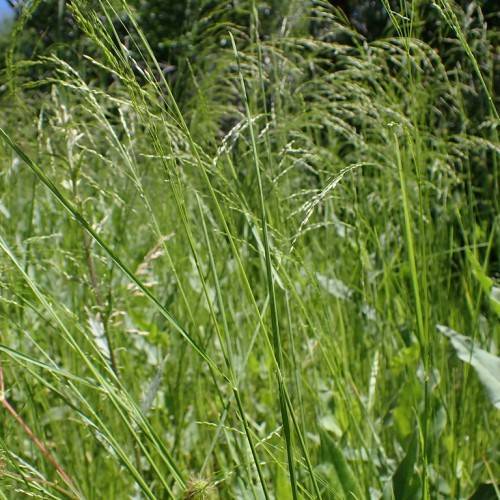
reed canary grass
Phalaris arundinacea
Also Known As - ribbon grassCycle:
Perennial
Watering:
Frequent
Hardiness Zone:
4 - 9
Flowers:
Flowers In Summer
Sun:
Full sun, Part sun/part shade
Soil:
Acidic, Bog, Humus rich
Fruits:
Fruits In Summer Ready In
Leaf:
Yes
Growth Rate:
High
Maintenance:
Moderate
Poisonous To Pets:
Yes
Salt Tolerant:
Yes
Invasive:
Yes
Care Level:
Moderate
watering
Reed canary grass (Phalaris arundinacea) is a perennial grass that grows best when given moderate to regular amounts of water. In the summer months, it ideally needs to be watered 2-3 times a week, providing about 1 inch (2.54 cm) of water each time. In the winter, the frequency of watering can be reduced to once a week, with only half an inch (1.27 cm) of water. It is important to make sure that the soil is not soaked, as overwatering can lead to root rot and other issues. It is also best to avoid excessive sunlight in the afternoon, as this could cause the soil to dry out quickly and lead to dehydration of the plant.
sunlight
Reed canary grass (Phalaris arundinacea) requires full sun to partially shaded areas to thrive. It prefers hot, humid weather and can tolerate up to 6-8 hours of direct sunlight daily. Planting them in a sunny location is beneficial, as it provides the necessary sun and warmth for their growth and root development. In addition, sunlight is essential for photosynthesis and for producing quality seed. When grown in full sun, reed canary grass will flower earlier and produce a higher quality of seed. Too much direct sunlight can cause the foliage to become scorched, reducing viability, so it is important to provide some shade.
pruning
Reed canary grass (Phalaris arundinacea) should be pruned in early spring or autumn. It should be cut back to half the usual height to encourage new growth and help keep it healthy. This should be done before the new growth appears in spring. In areas with extreme cold winters, you may need to lightly prune it in late winter to promote growth. After it has been pruned, the remaining foliage can serve as an insulating layer and protect the roots from winter chill. Doing this 1-2 times a year will remove the dead shoots and dead material from the plant, improve air circulation around it, and help it to grow vigorously.
